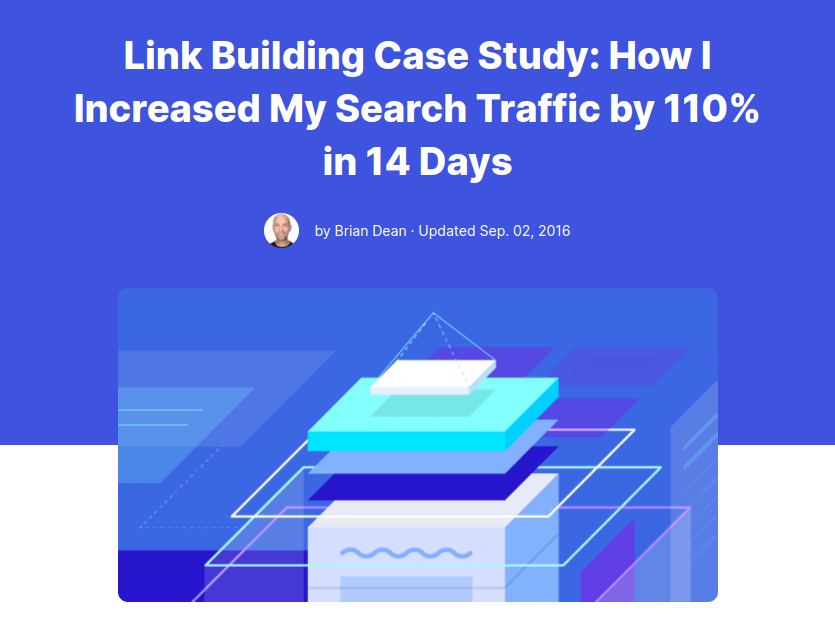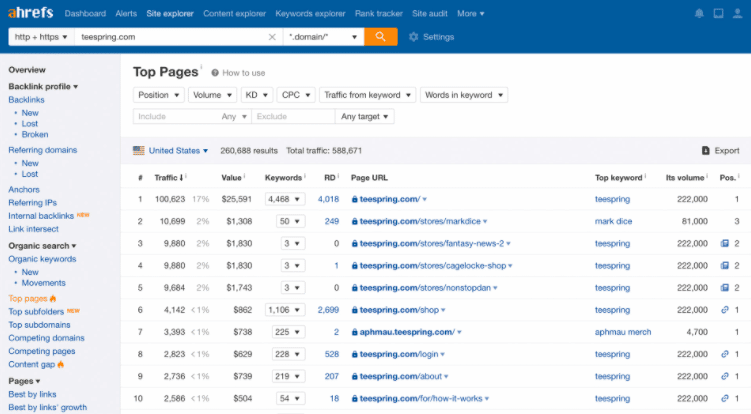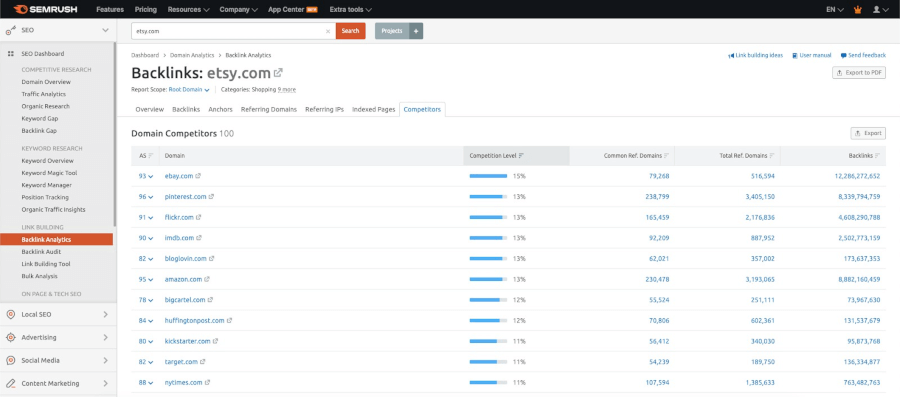Backlinks are an integral part of search engine optimization, though they’re often overlooked as many content creators busy themselves with creating new pieces of content week after week.
Coincidentally, if you were to focus your time on acquiring new backlinks, you’d receive more traffic by promoting content you’ve already created, saving you more time and money in the process.
In this post, we’re going to cover what backlinks are, exactly why they’re so important for SEO and how you can use your content to acquire more of them.
Backlinks Explained
Backlinks are links pointed toward your website from another website. It’s essentially a “shout out.” Basically, when another website inserts a URL from your website on one of their pages, a connection is established between your two sites.
Search engine bots discover these links when they crawl your website.
If you want an example of a backlink, take a look at this very page. At least two of the links in this article are backlinks: one for Backlinko and one for Search Engine Land.
When search engines crawl these two websites, they’ll be able to see that we linked back to them, hence the term “backlinks.”
Search engines use backlinks as signals to identify high-quality content. The more backlinks they find from authoritative sites, the higher you’ll rank.
It’s why backlinks are so important for SEO.
Types of Backlinks
Let’s touch base on the differences between good and bad backlinks, and yes, there is such a thing as a bad backlink.
You can identify high-quality backlinks in a few different ways. Domain authority and the amount of traffic a site receives are definitely most important.
It’s simple. A site with a high domain authority and a lot of traffic is seen as a reputable and authoritative source in the eyes of search engines like Google. Receiving a backlink from a site like this would do wonders for your rankings.
Sites you receive backlinks from should also have content that’s similar to yours.
This is due to “searcher intent,” Google’s protocol for presenting the best content possible for the keyword a user entered into the search engine.
Receiving backlinks from sites similar to yours helps Google understand what each page you publish is about, which is why this is such an important criteria for high-quality backlinks.
It’s also better to have one backlink per site rather than a few. This fact was uncovered in Backlinko’s analysis of 11.8 million search results, which found that, “getting backlinks from multiple different sites appear to be important for SEO. We found the number of domains linking to a page had a correlation with rankings.”
Basically, the number of domains you receive backlinks from has far more weight than the number of backlinks you receive in total.
Lastly but certainly not definitively, the link should you use a dofollow tag and anchor text similar to your target keywords.
As for low-quality backlinks, they’re essentially the antithesis of high-quality backlinks. These are sent from sites with low domain authorities and poor reputations. Receiving too many backlinks from sites like this may negatively impact your appearance in search engines.
Why are Backlinks Important?
Backlinks are mostly important for one essential reason: SEO, and while we’ve already established this point, let’s elaborate.
Google uses a long list of factors to rank your website and every individual page within it. SEO experts often cite over 200 ranking factors Google utilizes to rank your website, but there are only a dozen or so that truly matter when it comes down to it.
Backlinks are among the top three most important ranking factors, as explained by Google themselves. Sure, things like site security and page speed are considered, but think about what backlinks represent.
Social media posts have likes and re-shares to represent the number of people who recommend or express interest in specific posts. TV shows and movies have ratings, ticket sales and reviews. Even products and services have customer testimonials and reviews.
When someone links to your website from theirs, they’re essentially recommending you to their audience. Therefore, the more high-quality backlinks you receive, the more value your site will have in Google’s eyes. Its algorithm will rank your pages higher as a result.
How Do Backlinks Impact Your Site?
So, backlinks affect your site’s rankings, but what does that truly mean for you in the long run? It all comes down to traffic and basic math. More backlinks means more traffic because more backlinks means higher rankings, and higher rankings, in turn, leads to more traffic.
However, because not all backlinks are created equal, it’s much more accurate to say that you can only achieve that traffic with high-quality backlinks. This means you should aim to receive backlinks from reputable sites but also a variety of different sites.
Black-hat techniques and requesting backlinks from low-quality sites should be avoided at all costs. Google’s algorithm gets smarter with each passing year, so they’re very likely to pick up on any tainted backlinks you receive and penalize your site in response.
Finally, backlinks from low-quality sites can decrease your rankings, which will have a negative impact on the amount of traffic you receive overall.
How to Use Your Content to Get More Backlinks
When it comes to backlinks, you know what your goals should be:
- Get backlinks from reputable sites
- Receive backlinks from more sites in general
Basically, you should focus on receiving backlinks from authoritative sites that receive more traffic than you while also receiving only a single backlink from each one.
The most effective way to actively chase high-quality backlinks without being penalized by Google is by creating link-worthy content, preferably in the form of blog posts, cornerstone content and infographics.
Use keyword research and analyze your competitors’ sites (with tools like Semrush, Ahrefs and SiteProfiler by Mangools) to find topics your audience cares about most.
There are a few additional techniques you can use, such as asking your audience what problems they’re experiencing in your niche, browsing forums for the same information and reading negative reviews for books related to your niche.
No matter which technique(s) you use, make sure the topics you come up with are among the most popular in your niche. You can do this by turning them into two to four-word keywords and searching for them via keyword tools, Google, Amazon, YouTube and Udemy.
It’s simple math: the more results that come back, the more popular a particular topic is.
However, it’s not enough to simply create content for the most popular topics in your niche. The first few pages of Google are likely already filled with posts directly related to those topics.
Instead, read through some of the posts, and come up with ways to differentiate yours from them.
For example, Brian Dean’s post on Google’s 200 ranking factors was one of the first posts he wrote when he first launched Backlinko.
It was also one of his first “breakout hits,” and he intended for this to happen. While other posts focused on a small handful of ranking factors, Brian created a long-form post with over 200.
This set his post apart from the rest, and he was able to achieve a plethora of backlinks as a result. Proof of this can be found in his post about the “skyscraper technique” mentioned below.
No matter which technique you choose to use to acquire more backlinks, don’t even think about implementing it without first creating your own link-worthy breakout hit.
Replace Underperforming Backlinks
One of the boldest ways to receive more backlinks is to request them from other sites directly (without offering anything in return). That’s not to say you should simply find authoritative sites with content similar to your own and ask them to link to your site.
Instead, you should find underperforming pages those sites have linked to and ask them to replace those sites’ links with yours. This is what Brian Dean calls the “skyscraper technique.”

You should have your link-worthy piece of content finished and published by this point. This is what you’ll ask other sites to promote.
Start by turning your post’s topic into a searchable keyword, then identify inferior posts on the first few pages of Google. Run the URLs of these posts through one of the aforementioned tools (Semrush, Ahrefs, Site Profiler by Mangools, Link Explorer by Moz, Majestic SEO, etc.) to find their backlinks.
Find backlinks from sites with higher domain authorities than your own, and gauge their authority by looking at the amount of traffic they receive along with their social media influence.
Next, send brief, cut-to-the-chase emails or direct messages to the editors of these blogs letting them know you’ve written a post you feel is a better fit for their audience than the posts you’re trying to replace. Tell them to feel free to link to yours, but don’t pressure them.
There are a few additional ways you can pinpoint underperforming content to replace, but this approach is most effective.
Good Ol’-Fashioned Guest Posts
Not only do guest posts provide wonderful opportunities for you to promote your brand and receive more traffic, they’re actually designed to give you backlinks. This is because you’re typically given the opportunity to promote one link in your post.
In the case of guest posting, you can most certainly sacrifice that piece of link-worthy content you’ve created and offer it to the site you want to create a guest post for.
Sponsor Posts On Third-Party Sites
If you have a product to promote, you can request third-party sites to create content for it by sponsoring blog posts. Reviews and tutorial posts are fantastic types of content to sponsor.
No matter what, this technique is designed to give you more backlinks by having other sites link to your product page. The rules work the same way here: choose quality sites that have similar or higher domain authorities than yours as well as a decent amount of traffic.
Final Thoughts
Backlinks are among the most important components of SEO. They give your site more value in Google’s eyes, but only if their of a certain quality. When they are, they’ll bring your site more traffic as you’ll appear higher and higher in Google’s search results for certain keywords.
Content is the key to receiving more backlinks. Create unique pieces of content for the most prominent topics related to your niche. It should knock all other content created for those topics right out of the park.
As you acquire more backlinks through this process, you’ll acquire more traffic as a result and will therefore receive more revenue (depending on how you utilize that boost in traffic).
In this case, be sure to give our plugin Starfish Reviews a spin as it’ll make it easy for you to gather private feedback and public reviews for your product.








0 Comments